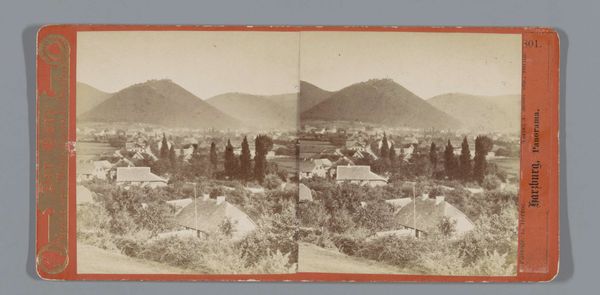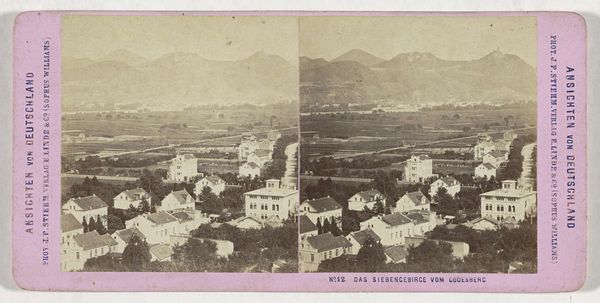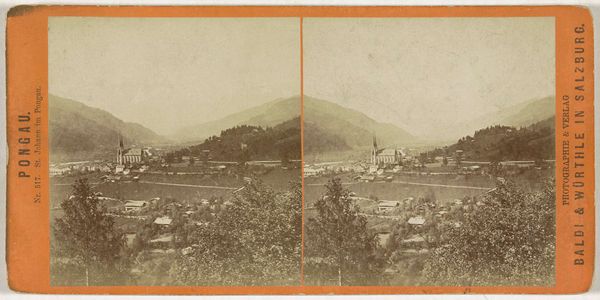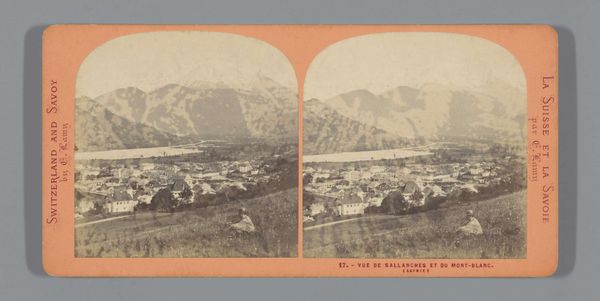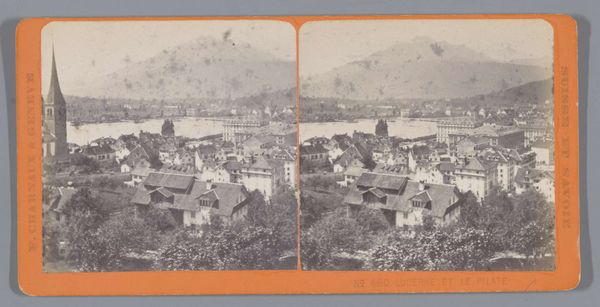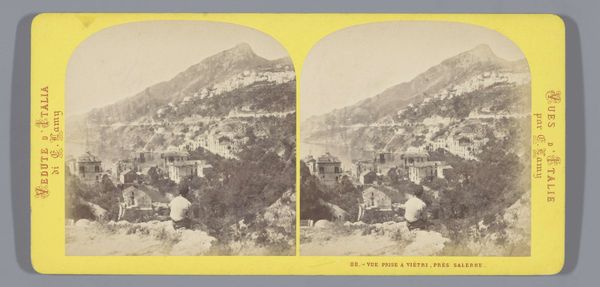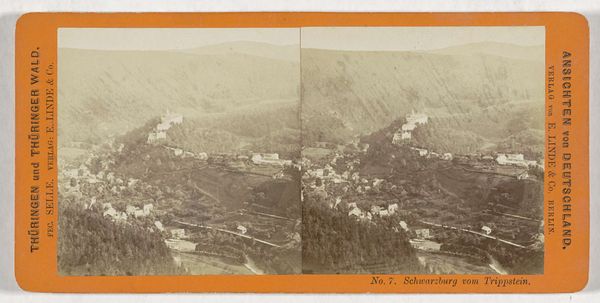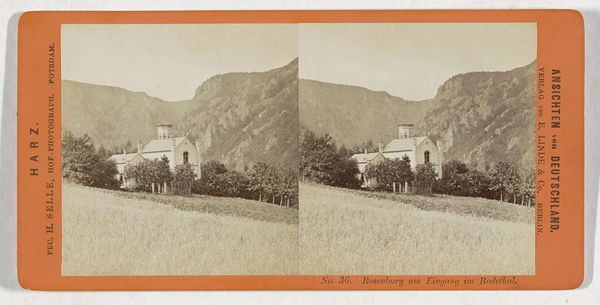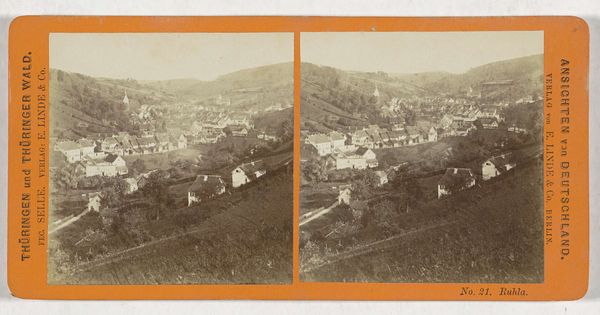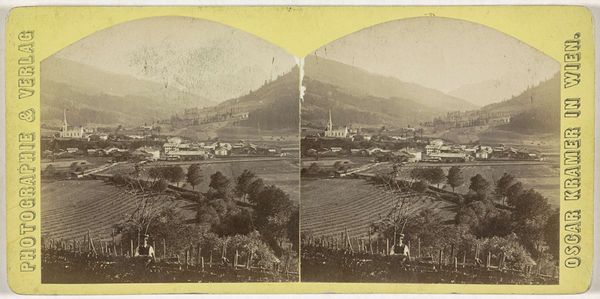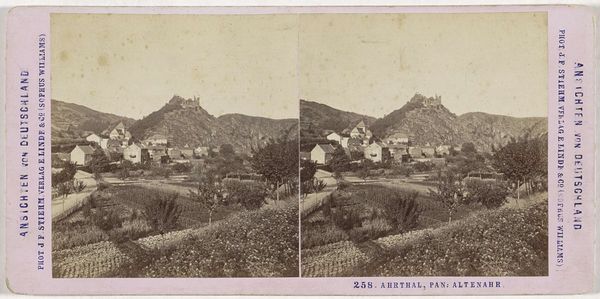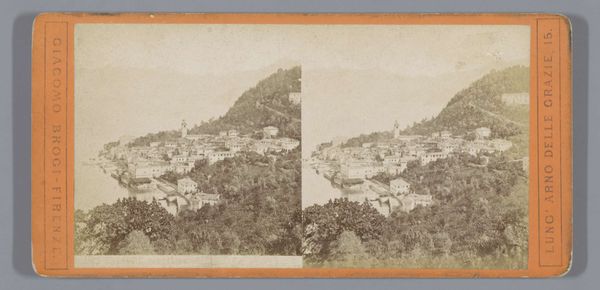
Dimensions: height 87 mm, width 176 mm
Copyright: Rijks Museum: Open Domain
This stereoscopic photograph by Hermann Selle presents a view of Bad Harzburg, with the Burgberg in the background. Its sepia tones and doubled format offer a window into a world shaped by emerging photographic technologies. Photography in this era wasn't just about capturing an image; it was a chemical process, requiring careful manipulation of light-sensitive materials and precise timing in the darkroom. The stereoscopic format itself involved a specialized camera with two lenses, mimicking human vision to create an illusion of depth, inviting the viewer to immerse themselves in the scene. Beyond aesthetics, the photograph speaks to a shift in how people experienced the world. With advancements in transportation and printing, images became more accessible, fueling a growing appetite for travel and exploration. This photograph wasn't just a piece of art; it was a commodity, produced and distributed as part of a burgeoning visual culture. Looking closely at the image-making process reveals how the photograph is tied to wider social issues of labor, politics, and consumption.
Comments
No comments
Be the first to comment and join the conversation on the ultimate creative platform.
